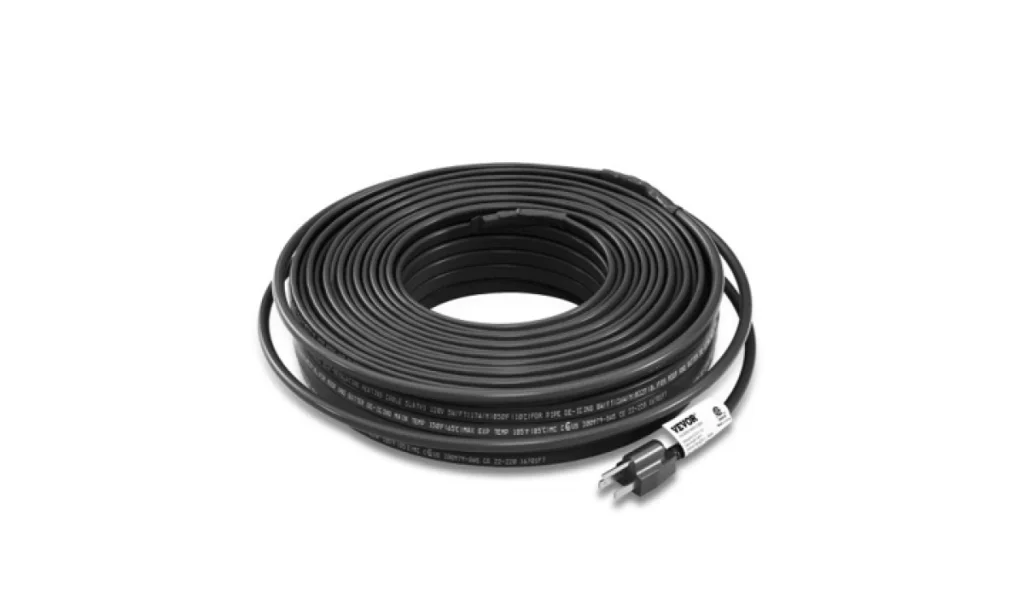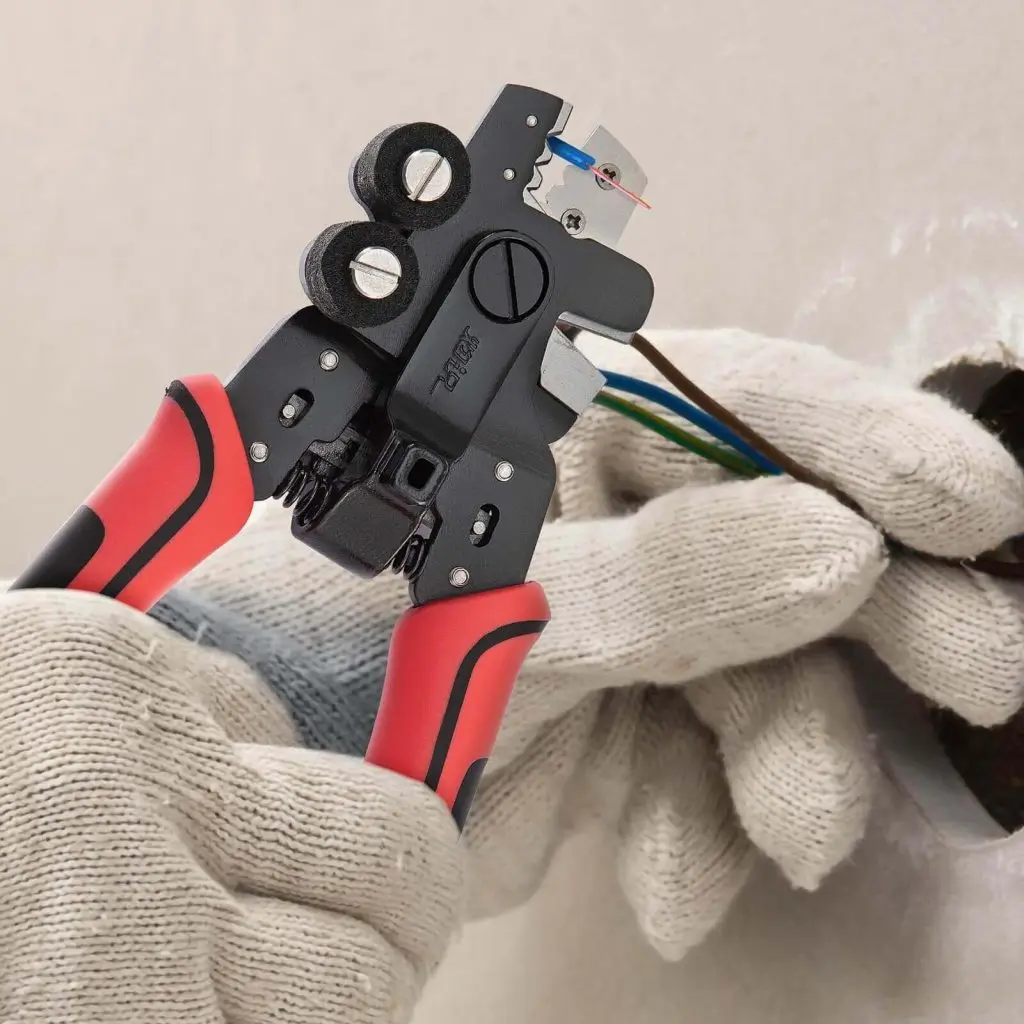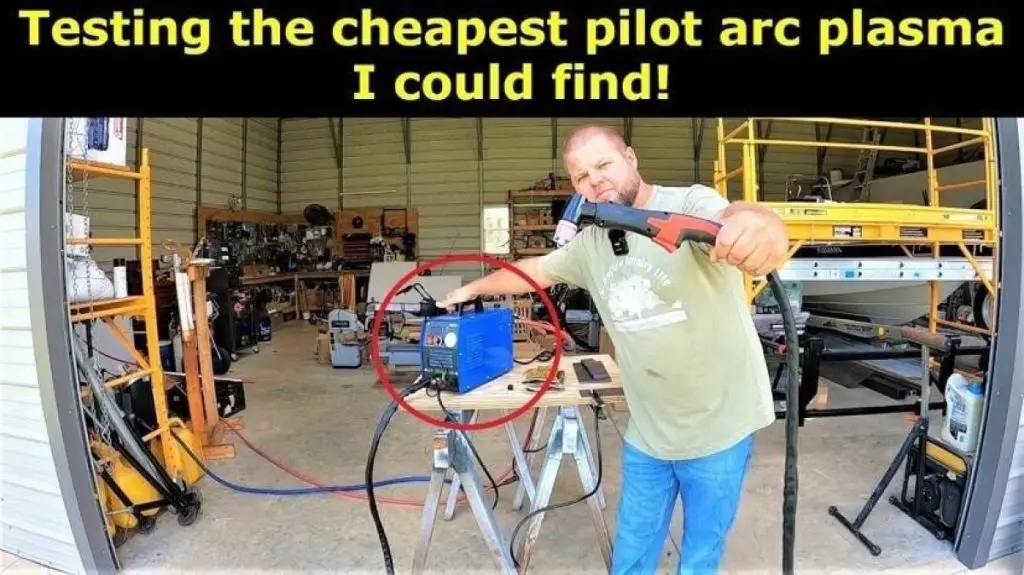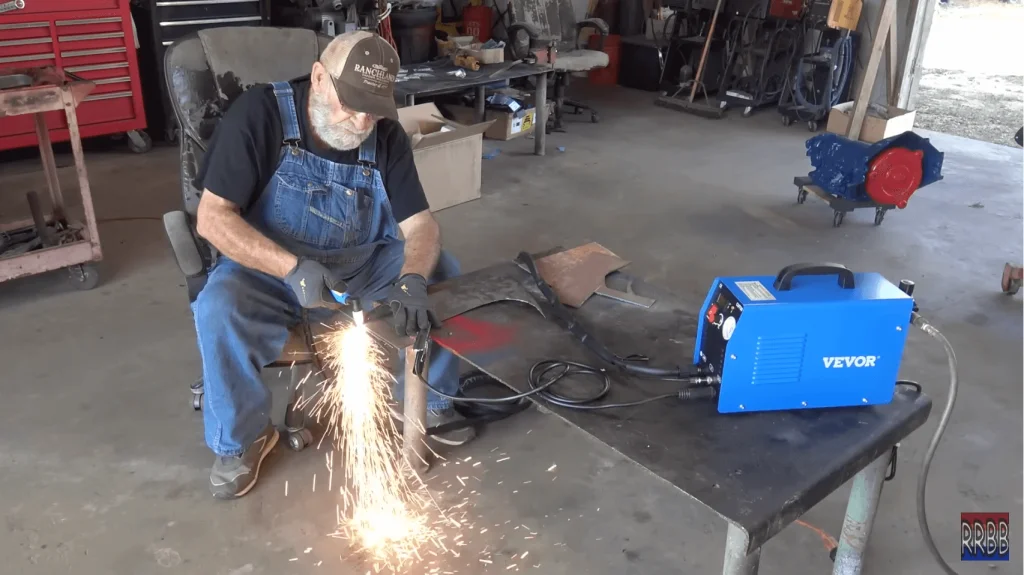When dealing with water pipes, it’s hard to know the exact temperature needed to prevent them from freezing. Winter temperatures are unpredictable, and you could be in for a nasty surprise without the proper equipment.
Forgetting to properly insulate your pipes can mean costly repairs and lost revenue from water damage. Not knowing the exact temperature needed to keep them from freezing is a high-stakes gamble that could end up costing you dearly.
The Ultimate Guide to Self-Regulating Pipe Heating Cable & How It Works is here to help! Our guide will provide you with all the information you need to quickly choose the right cable for your piping system, understand how it works, and easily install it for maximum efficiency. With our guide, you can save yourself time, money, and headache
What is a Self-Regulating Pipe Heating Cable and Its Benefits
Winter can be a difficult time for homeowners regarding their water pipes. As temperatures drop, the risk of frozen pipes increases, leading to costly repairs and damages.
Fortunately, with Self-regulating pipe heating cables, you can ensure your pipes don’t freeze during winter.
Self-regulating pipe heating cables are an innovative solution to pipe freezing problems in cold climates. These cables are designed to automatically adjust the amount of heat they produce according to the environment’s temperature, providing a reliable and efficient way of keeping pipes from freezing.
Not only do these cables provide a cost-effective way of preventing frozen pipes, but they also offer many other benefits that make them an attractive choice for any homeowner or a business owner.
Understanding how temperature affects water pipes and having an appropriate temperature monitoring system can ensure that your pipes stay safe in even the coldest conditions.
The Best Self-Regulating Heat Cable Available in The Market
A self-regulating heat cable must be reliable and trustworthy since it is a long-term investment.
1. VEVOR Self-Regulating Pipe Heating Cable
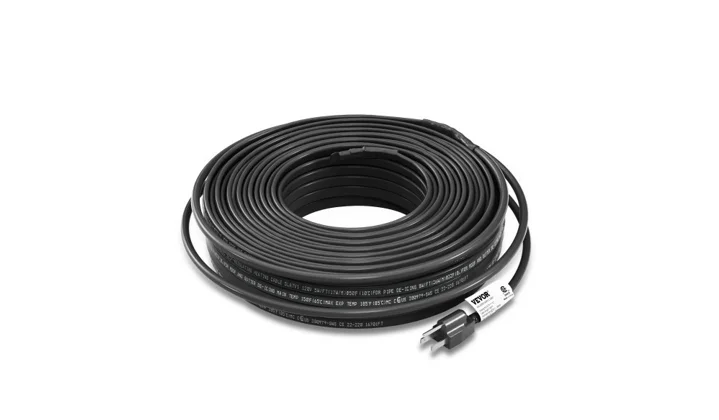
Vevor self-regulating pipe heating cable is certified by CSA, which means it has passed the safety standards of Canada. It features a guaranteed 5 minutes to rise to 85℉ and keeps your pipes protected from -4℉ cold temperatures.
Winterize your roof, gutter, and water pipes with VEVOR’s innovative self-regulating heat tape! The120 V heat tape adjusts automatically to temperatures, so you can keep your home safe & warm without worrying about overheating or freezing. Plus, it’s easy to install – just wrap it around the pipe or place it straight on. With VEVOR’s advanced technology and unbeatable convenience, you can rest assured your home will be cozy all winter long!
Features and Performance:
Safe to use on
- ABS
- PVC Hose
- Copper Pipe
- Galvanized Pipe
- Brass Pipe
- Steel pipe of 1/2″~2″
Self-Regulating Technology
The power output will automatically adjust to compensate for changes in pipe temperature.
Build-in Thermostat
The thermostat turns the heating cable on 43℉(close to freezing) and shuts it off when the temp.
Indicator Light
There is an indicator light on the grounded plug to let you know it’s working.
Parameter Table:
Heat Cable Length: 60ft/18.3m
Power Cord Length: 3ft/0.91m
Constant Power: 5w/ft
Temperature of Cable on: 43°F/6°C
Temperature of Cable off: 55°F/13°C
Cable Width: 3/10in
For Pipe Diameter: 1-2”~2”
Product Weight: 2.6lbs / 1.2kg
Pros:
● Budget Friendly
● CSA Certified
● Built in thermostat
● Covenient and smooth installation
2. nVent Raychem BTV Self-Regulating Heating Cable
Raychem features a heating core of conductive polymer embedded with two parallel conductors. A radiation cross-linking process is used to ensure long-term reliability.
With over 50 years in the market, nVent gained brand recognition and global standard in heating.
Performance:
Max Maintain or Continuous Exposure Temperature, Power On/Off: 150 °F
Max Intermittent Exposure Temperature, Power On/Off: 185 °F
Ground Path Type: Braid
Area Classification: Non-Hazardous; Hazardous
Features:
Simplified design in hazardous area:
● Unconditional T6 class
Fast installation:
● Cut-to-length
● Multiple overlaps allowed
● Meter markings
● User-friendly connections kits
Safe and efficient in operation:
● No overheating
● Uniform pipe temperatures
● Energy saving technology
Reliable during long life:
● 10 year product warranty available
● Maintenance free
Pros:
● 50yrs in the market
● A wide variety of cables to choose from
3. Speedtrace Self-Regulating Heating Cable
Speedtrace’s self-regulating heating cable cost is around 35 dollars and is now available in the market. It is good for metal and plastic pipes but is not suitable for flexible vinyl tubing. With its lowest price on the market, speed trace ranked 3rd on the list.
Features:
● Self-regulating heating design
● Moisture and UV resistant
● Durable construction
● 12 ft long, 120v
Pros:
● Pre-assembled with standard 3-prong (NEMA 5-15) plug
4. Eltherm Self-Regulating Heating Cable
The Eltherm’s ELSR series offers a variety of temperature classes and ranges to meet your specific needs, and their power per meter is constant no matter how much you cut them. With Eltherm, you can trust that your applications will be safe from freezing – fast, easy, and reliable.
Performance:
Choose between different temperature ranges
● Low Temperature: Up to 80 °C
● Medium Temperature: Up to 110 °C
● High Temperature: Up to 250 °C
Features
● Self-regulating with adaptable output
● Demand-orientated output grading
● High chemical resistance
● No temperature limitation required(important in Hazardous Areas)
● Easy to install
● Can be cut to length off the roll
● Connection by plug-in connectors
Pros:
● Eltherm designer Included
● Good customer service
5. Thermon BSX™ Self-Regulating Heating Cable
Thermon’s BSX™ cutting-edge technology ensures your piping, tanks, and equipment are always operating within the ideal temperature range. Plus, the heat output of our cables dynamically adjusts to changing conditions, so you can be sure your system is always running as efficiently as possible. With Thermon, you’ll enjoy reliable freeze protection and process temperature maintenance – all in one!
Performance:
Available watt densities:10, 16, 26, 33 W/m @ 10°C & (3, 5, 8, 10 W/ft @ 50°F)
Supply voltages:110-120 or 208-277 Vac
Max. maintenance temperature: 65°C (150°F)
Max. continuous exposure temperature Power-off: 85°C (185°F)
Minimum installation temperature: -51°C (-60°F)
Minimum bend radius
@ -15°C (5°F): 10 mm (0.38”)
@ -60°C (-76°F): . 32 mm (1.25”)
T-rating
10, 16, 26 W/m (3, 5, 8 W/ft): T6 85°C (185°F)
33 W/m (10 W/ft): .T5 100°C (212°F
Features:
● Nickel-plated copper bus wires (16 AWG)
● Radiation cross-linked semiconductive heating matrix
● Radiation cross-linked dielectric insulation
● Tinned copper braid
● Polyolefin over jacket
What Are the Two Types of Heat Tracing?
Heat tracing is applying heat to pipes, tanks, and other equipment to maintain the temperature of the material inside. It can be used in various industries, such as oil and gas, chemical, pharmaceutical, and food. There are two types of heat tracing: Constant Wattage and Self-Regulating cable.
Constant Wattage
Constant wattage heat cable is an electric heating system that provides consistent heat in various applications. It is widely used in the industrial and commercial sectors, as well as in residential settings.
Constant wattage heat cable is also ideal for areas where conventional heating methods are not practical or cost-effective. With its ability to provide reliable and efficient heating with minimal installation costs, constant wattage heat cable is becoming an increasingly popular choice for many homeowners and businesses.
Self-Regulating
Self-regulating heating cables are an innovative way to heat a space without requiring manual temperature control. This cable type is designed to adjust its heat output based on the surrounding environment, providing a more efficient and cost-effective heating solution than traditional methods.
With self-regulating heating cables, you can save money on energy costs while still keeping your space warm and comfortable. Additionally, these cables are easy to install and require minimal maintenance, making them an ideal choice for any home or business.
How Does a Self-Regulating Pipe Heating Cable Work?
The cables use a unique self-regulating technology that adjusts the temperature of the pipe automatically based on its surrounding environment, ensuring that it is always warm enough to prevent freezing.
This technology also helps reduce energy consumption, as it only uses the energy necessary for the job.
What to Look for When Buying a Heating Cable
Heating cables are essential to many homes, businesses, and industrial applications. As such, it is vital to ensure you buy the right cable for your needs.
When looking for a heating cable, there are several factors to consider, such as length, wattage, type of insulation, and temperature rating. Additionally, it is crucial to ensure that the cable is compatible with your existing system or application.
The Length of the Cable
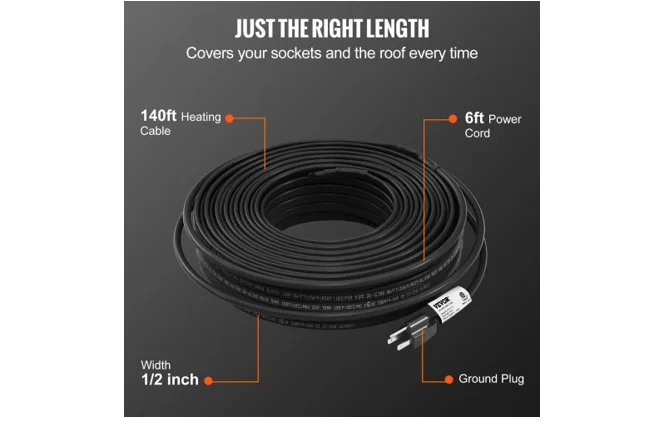
Whether you are buying a cable for your home or office, it is important to make sure that you check the length of the cable before making the purchase. This is because the length of the cable determines how far it can reach and what kind of devices it can connect. Knowing the length of the cable ensures that you get one that is suitable for your needs and doesn’t cost too much. Furthermore, checking the length helps to avoid any inconvenience that might be caused due to a wrong purchase decision.
The Wattage of the Cable
Wattage is one of the most important factors to consider when buying a cable. Checking the wattage of the cable before purchase is essential to ensure that it can handle the power load you intend on using it for.
Additionally, knowing your cable’s wattage helps you ensure that you are not overloading it and risking a potential fire hazard. It also helps you ensure you are not wasting money on an underpowered cable that won’t handle your intended load.
Type of Insulation
It is essential to check the type of insulation that it has. Different types of insulation can provide different levels of protection against electrical shock, heat, and other elements. Therefore, it is crucial to choose a cable with the right type of insulation for your needs.
Temperature Rating
Selecting a suitable cable for your electronic device can be a daunting task. One of the essential factors to consider when buying a cable is its temperature rating.
Temperature rating is an indication of how much heat the cable can handle before it starts to degrade. It is essential to have an idea about the temperature rating of a cable before making a purchase decision, as it will help you avoid costly repairs in the long run.
Is Self-Regulating Pipe Heating Cable Worth It?

Yes! Self-regulating pipe heating cables provide a cost-effective and energy-efficient way to keep your pipes from freezing in cold climates. They can be used for various applications, such as protecting outdoor water lines, roof gutters, downspouts, etc.
With their ability to automatically adjust the heat output based on the environment’s temperature, self-regulating pipe heating cables are an excellent choice for anyone looking for an effective way to protect their pipes from freezing temperatures.
FAQ About Sustainable Heating Cables
What is the difference between heat tape and heat cable?
Heat tape and heat cable are both used to provide warmth in various applications. While they may seem similar, there are some critical differences between them. Heat tape is more flexible and is typically used for short-term applications, such as wrapping around pipes to prevent them from freezing in cold temperatures.
Heat cable, on the other hand, is a multi-stranded wire often used for long-term applications, such as providing heat to an entire room or building.
Both heat tape and heat cable can be effective solutions for providing warmth in specific settings. Still, it’s essential to understand their differences before deciding which one to use.
Are Heating Cables Safe?
Yes, heating cables are safe to use in both residential and commercial settings. They are designed with safety in mind, so you can rest assured that they will not cause any harm when installed properly.
Additionally, modern heating cables come with built-in safety features like overheating protection, which prevents them from getting too hot and causing a fire hazard.
Does Heat Cable Use a Lot of Electricity?
Heat cable is a cost-effective way to keep pipes from freezing during cold weather. But with any electrical device, there is always the question of how much electricity it consumes. On average, heat tape consumes nine watts per lineal foot.
This means that depending on the length of the heat tape and its wattage, it can consume a significant amount of electricity. However, when compared to other heating devices like baseboard heaters or furnaces, heat cable uses much less energy and is, therefore, more economical.

